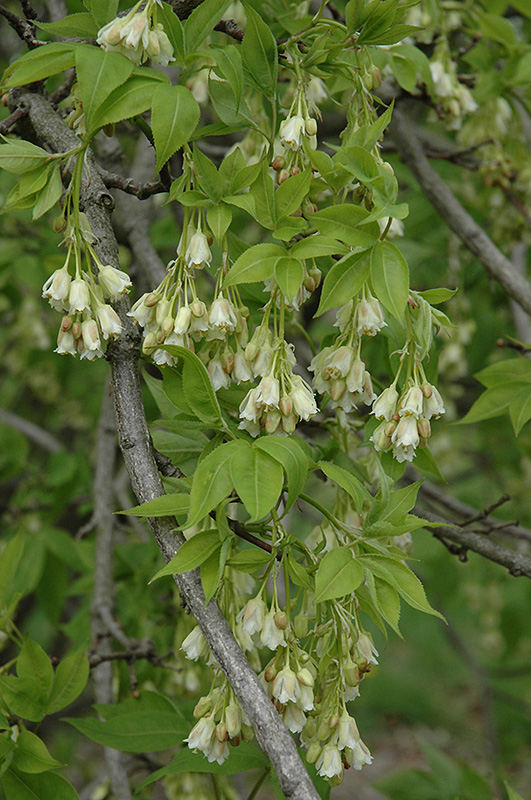>> Home
Height: 15 feet
Spread: 20 feet
Sunlight:
![]()
![]()
Hardiness Zone: 3
Description:
A riparian forest area plant native to much of eastern North America with unique bladder-like fruit in the summer, coveted for dried floral arrangements; self-seeds freely under the right circumstances and may become a problem
Ornamental Features
American Bladdernut has nodding white bell-shaped flowers with light green overtones hanging below the branches from early to late spring. It has dark green deciduous foliage which emerges lime green in spring. The oval compound leaves turn lemon yellow in fall. It produces light green capsules in early fall. The smooth grayish green bark and light green branches are extremely showy and add significant winter interest.
Landscape Attributes
American Bladdernut is a multi-stemmed deciduous tree with an upright spreading habit of growth. Its average texture blends into the landscape, but can be balanced by one or two finer or coarser trees or shrubs for an effective composition.
This is a high maintenance tree that will require regular care and upkeep, and is best pruned in late winter once the threat of extreme cold has passed. Gardeners should be aware of the following characteristic(s) that may warrant special consideration;
- Self-Seeding
American Bladdernut is recommended for the following landscape applications;
- Accent
- Naturalizing And Woodland Gardens
Planting & Growing
American Bladdernut will grow to be about 15 feet tall at maturity, with a spread of 20 feet. It has a low canopy, and is suitable for planting under power lines. It grows at a fast rate, and under ideal conditions can be expected to live for 40 years or more.
This tree does best in partial shade to shade. It prefers to grow in average to moist conditions, and shouldn't be allowed to dry out. It is not particular as to soil type or pH. It is somewhat tolerant of urban pollution. This species is native to parts of North America.
